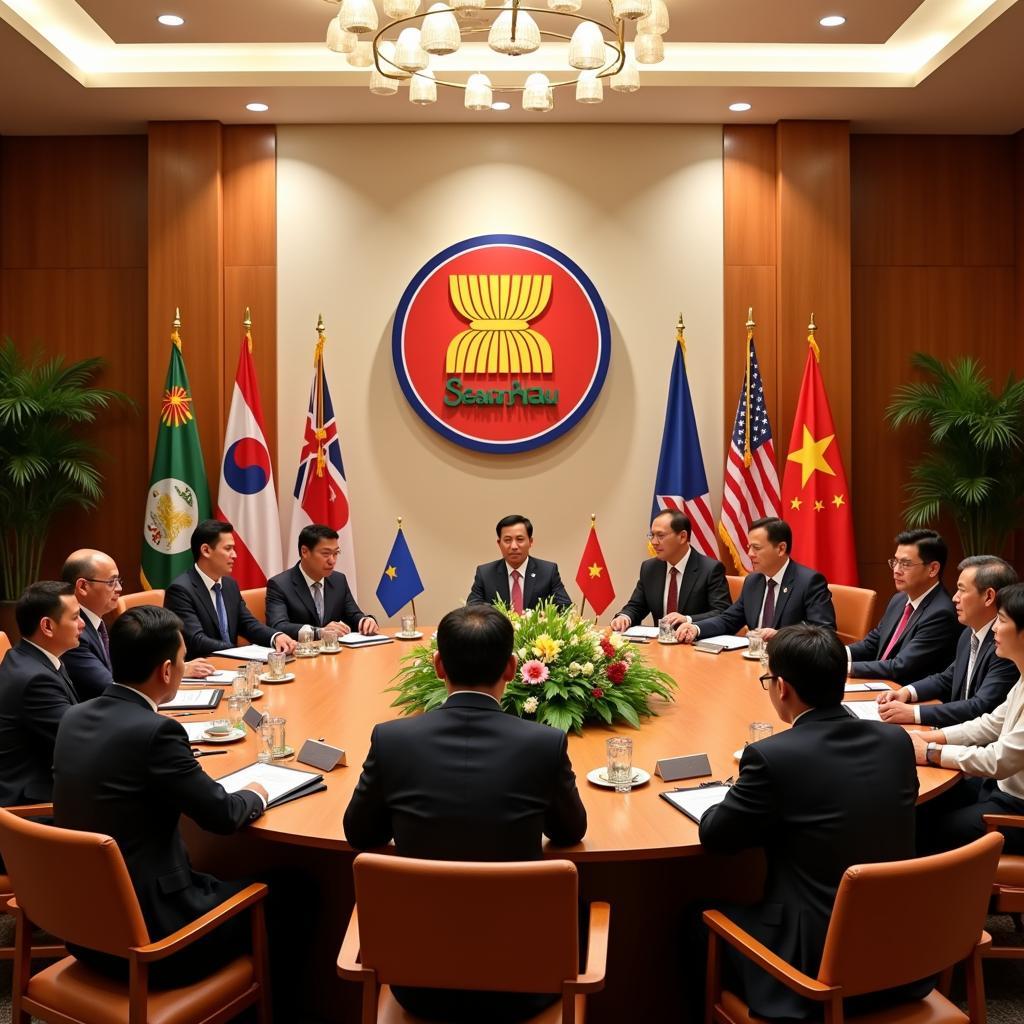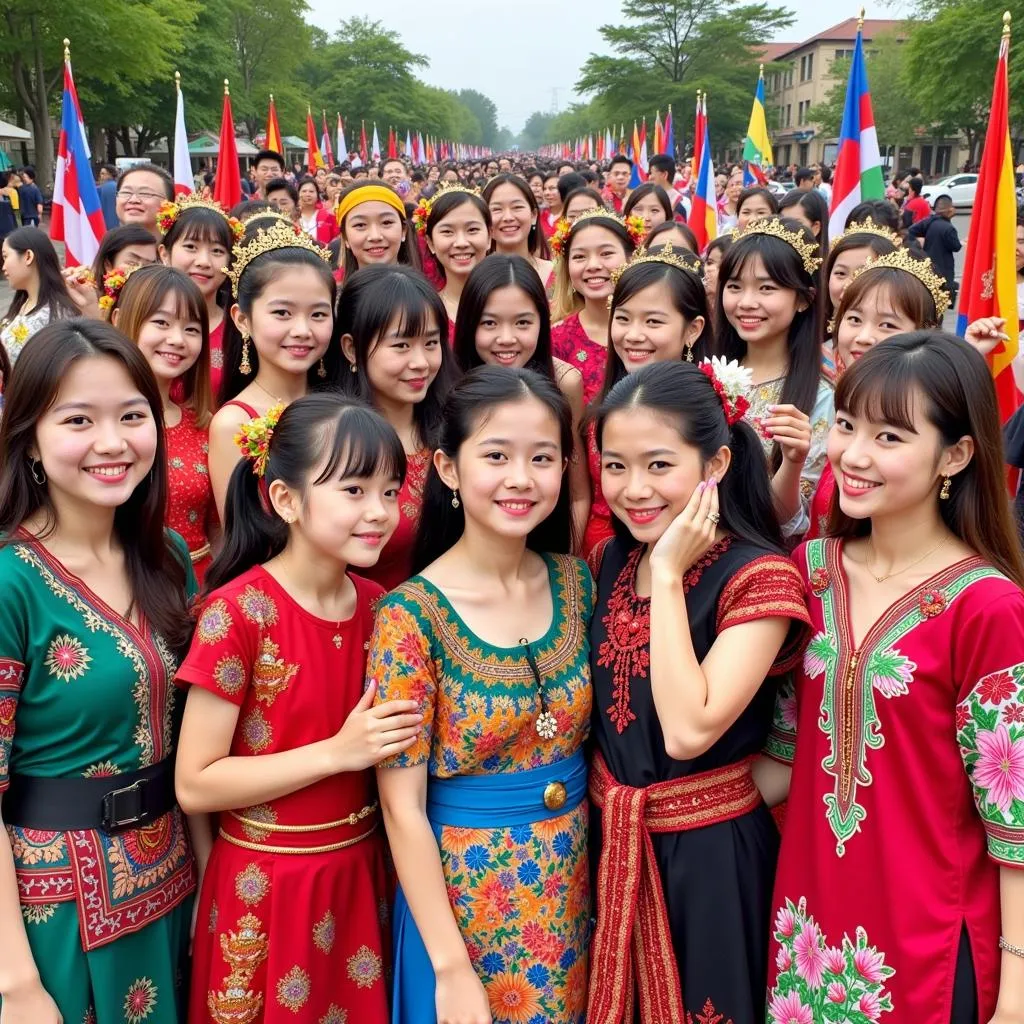The Association of Southeast Asian Nations (ASEAN) stands as a testament to regional cooperation and development. Established on August 8, 1967, ASEAN emerged from a landscape marked by geopolitical tensions and a shared aspiration for peace and stability. This article delves into the background and development of ASEAN, highlighting its journey towards becoming a dynamic and influential force on the global stage.
From Discord to Dialogue: The Genesis of ASEAN
The 1960s witnessed a Southeast Asia grappling with the legacies of colonialism, the rise of communism, and internal conflicts. Amidst this backdrop, five nations – Indonesia, Malaysia, the Philippines, Singapore, and Thailand – came together to sign the ASEAN Declaration, also known as the Bangkok Declaration. This pivotal document laid the foundation for a regional organization committed to promoting peace, security, and economic growth.
The formation of ASEAN was driven by a shared recognition that regional cooperation was essential for addressing common challenges and fostering prosperity. The founding fathers envisioned an organization that would serve as a platform for dialogue, collaboration, and conflict resolution.
Expanding Horizons: ASEAN’s Enlargement and Evolving Agenda
Over the decades, ASEAN has grown both in terms of its membership and the scope of its activities. Brunei Darussalam joined in 1984, followed by Vietnam in 1995, Laos and Myanmar in 1997, and Cambodia in 1999. This expansion solidified ASEAN’s position as the primary regional organization in Southeast Asia, encompassing a diverse range of political systems, economic models, and cultural heritages.
 ASEAN Summit
ASEAN Summit
As ASEAN’s membership expanded, so too did its agenda. Economic cooperation emerged as a key pillar, with the establishment of the ASEAN Free Trade Area (AFTA) in 1992 aiming to boost intra-regional trade and investment. Recognizing the importance of addressing transnational challenges, ASEAN has also played a proactive role in promoting cooperation on issues such as terrorism, climate change, and disaster management.
ASEAN’s Three Pillars: A Framework for Integration
To effectively pursue its multifaceted agenda, ASEAN operates based on three pillars:
- ASEAN Political-Security Community (APSC): This pillar focuses on promoting peace, security, and stability in the region through dialogue, confidence-building measures, and conflict prevention mechanisms.
- ASEAN Economic Community (AEC): The AEC aims to create a single market and production base by eliminating barriers to trade, facilitating the free flow of goods, services, investment, and skilled labor, and promoting economic integration.
- ASEAN Socio-Cultural Community (ASCC): The ASCC seeks to foster a sense of shared identity and belonging among the people of Southeast Asia by promoting cultural exchange, educational cooperation, and social development initiatives.
These three pillars are interconnected and mutually reinforcing, reflecting ASEAN’s recognition that sustainable development requires a comprehensive approach.
ASEAN’s Global Engagement: A Partner for Peace and Prosperity
While ASEAN remains deeply rooted in Southeast Asia, it has also emerged as a significant player on the global stage. The organization actively engages with external partners, including major powers such as the United States, China, Japan, and the European Union. ASEAN-led forums, such as the East Asia Summit (EAS) and the ASEAN Regional Forum (ARF), provide platforms for dialogue and cooperation on regional and global issues.
ASEAN’s commitment to multilateralism, its emphasis on dialogue and consensus-building, and its role as a bridge between major powers have made it a valuable partner in the international community.
Conclusion: ASEAN’s Enduring Legacy
From its humble beginnings as a five-member organization, ASEAN has evolved into a dynamic and influential regional bloc. Its journey has been marked by challenges and successes, but its commitment to peace, stability, and prosperity has remained unwavering. As ASEAN continues to navigate a complex and evolving global landscape, its experience in fostering cooperation, promoting dialogue, and building bridges across differences will continue to serve as a valuable asset. The organization’s enduring legacy lies in its ability to bring together diverse nations, united by a shared vision for a more peaceful and prosperous Southeast Asia.
FAQs about ASEAN Background and Development
1. What is ASEAN’s primary goal?
ASEAN’s primary goal is to promote peace, stability, and prosperity in Southeast Asia through dialogue, cooperation, and regional integration.
2. How has ASEAN’s membership changed over time?
ASEAN began with five founding members in 1967 and has expanded to include all ten Southeast Asian countries.
3. What are the three pillars of ASEAN?
The three pillars of ASEAN are the ASEAN Political-Security Community (APSC), the ASEAN Economic Community (AEC), and the ASEAN Socio-Cultural Community (ASCC).
4. How does ASEAN engage with countries outside of Southeast Asia?
ASEAN actively engages with external partners through dialogue partnerships, forums like the East Asia Summit, and joint initiatives on issues of common concern.
5. What is ASEAN’s role in the global community?
ASEAN is a strong advocate for multilateralism, dialogue, and cooperation, playing a bridging role between major powers and contributing to regional and global stability.
For more insights on ASEAN and related topics, explore our website.
Need assistance? Contact us:
Phone Number: 0369020373
Email: aseanmediadirectory@gmail.com
Address: Thon Ngoc Lien, Hiep Hoa, Bac Giang, Vietnam.
Our dedicated customer support team is available 24/7 to assist you.

